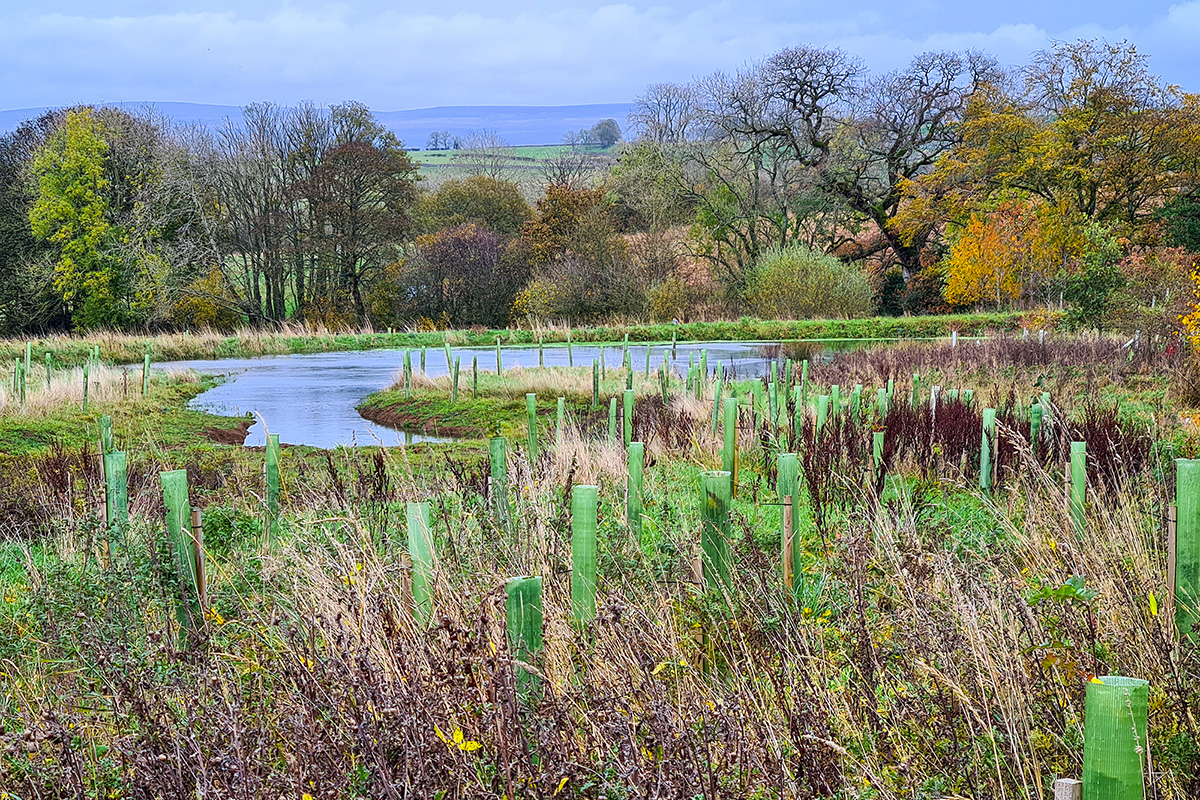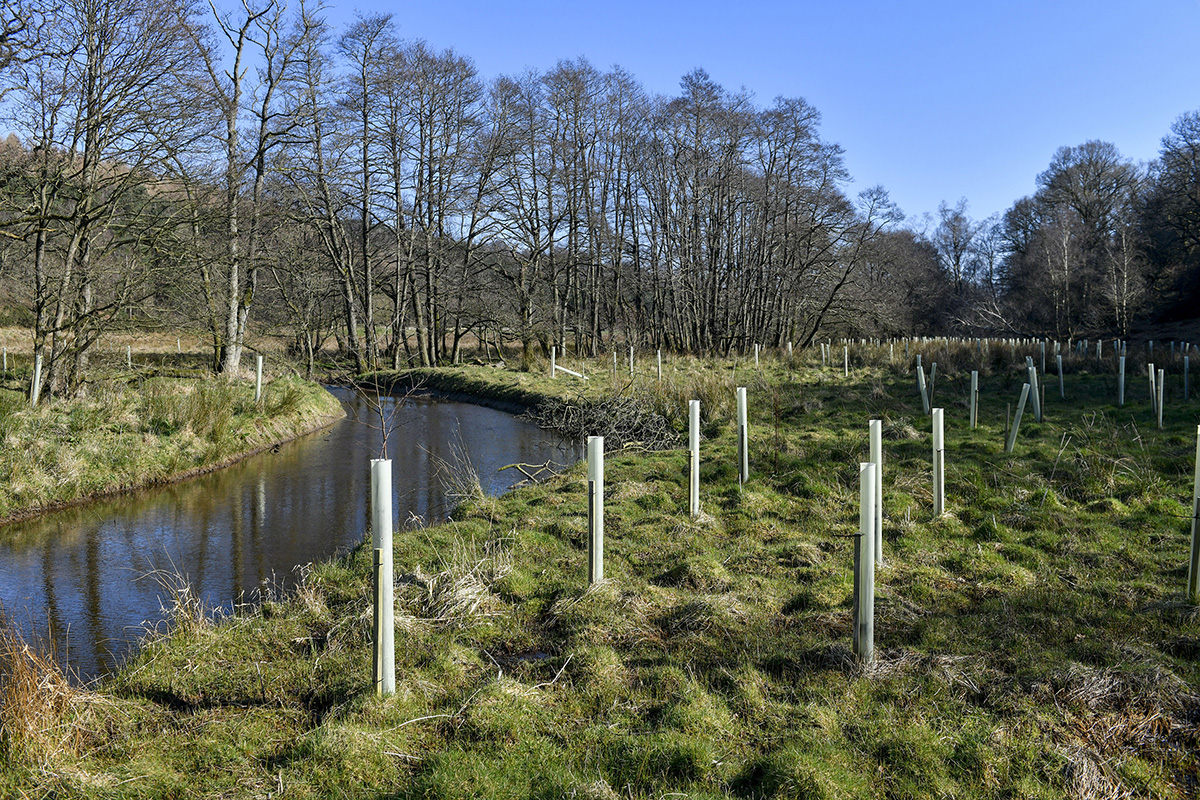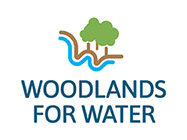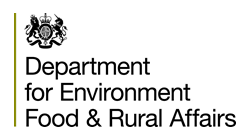Right tree, right place
Michael, our Head of Conservation explains why it is so important to plant the right tree in the right place

This National Tree Week, our Farming and Conservation Officer, Anna Holliday. shares why woodlands are essential for healthy rivers and how the Woodlands for Water scheme can support Eden’s farmers and landowners to plant more much-needed trees to improve and protect Eden’s rivers.
Tree cover in England currently stands at a tiny 10.% of the land in England (UK Government 2021), and yet trees have an essential role to play to tackle the climate and biodiversity crisis. To help address this, Woodlands for Water (W4W) was developed by Riverscapes Partnership, supported by Defra, that aims to create 3,150 hectares of trees in six river catchments from Devon to Cumbria by March 2025.
Since April 2022, I have been the Woodlands for Water adviser here at Eden Rivers Trust. As a local land management adviser, I can apply for funding through the England Woodland Creation Offer (EWCO) grant on behalf of the landowner /farmer or advise a different avenue of funding to achieve the best tree planting outcome.
Trees connect habitats; creating corridors between forests that provide routes for animals to move safely between habitats, and help seeds carried by animals to disperse.
From intercepting water to acting as a physical barrier, trees slow the flow of water to becks, rivers and communities creating natural flood management.
Planted beside rivers (riparian planting), they cast shade over the water, modifying how much sunlight reaches the surface; regulating temperature and providing a ‘dappled’ effect, varying the environmental conditions for aquatic life.

Riparian planting at Crake Trees Manor, Crosby Ravensworth

Riparian planting at Flakebridge. Photo: Stuart Walker Photography
The trees themselves provide a variety of habitats for fish, invertebrates and amphibians, where they can thrive and shelter to escape predators. Above the waterline, they are home to a host of birds, pollinators and other insects. Did you know that insects falling into the water from overhanging leaves and branches comprises up to 90% of the diet of numerous species of fish!
Leaf litter can act as the foundation of the food chain, particularly where conditions are too cold or nutrient poor for plants to grow. The litter is food for micro-organisms and invertebrates, providing food for predators, such as salmonid fish (trout and salmon).
They act as buffers for the river, reducing the impact of diffuse pollution. When sediment (often containing pollutants) is carried by water into the river settles between the gravel, it reduces the oxygen available and creates an inhospitable environment so that salmon and trout fish eggs cannot survive and thrive.
Trees and other overland vegetation trap this sediment before it reaches the watercourse.
Trees are key to bank stabilisation, reducing erosion and the entry of sediment into the watercourse. Even when dead, trees are important for rivers. Wood in the river can slow the flow, helping to form still pools for fish spawning. They can provide shelter from predators, increase fish territories, and trap organic matter – the foundation material in the food chain.
Since April, at least 17 landowners have expressed interest in creating woodland with Eden Rivers Trust. So far, this has led to two EWCO applications being submitted on behalf of landowners, with another two very close to submission. Between them, they will create just over 11ha of tree planting, most of which is riparian planting that will ecologically benefit our watercourses and help to slow their flow.
Look at the options of woodland creation on your land. Some key areas to consider include: the possibility of fencing off watercourses, creating woodland corridors, extending areas of existing woodland, or even making use of those less productive and inaccessible corners. For EWCO, the best financial incentive is rewarded for riparian tree planting, particularly smaller watercourses, where it extends existing woodland.
Simply arrange a site visit with me and I will go through the options and opportunities for tree planting on your land. If you choose EWCO, you will have a small amount of paperwork to do with my help – this will start the application process and give me permission to do the rest! I will do the online paperwork and mapping, send the application, and answer any queries the Forestry Commission may have. Once approved, you will have two years to complete the capital works and will be in the agreement for a further 15 years.
I am available for site visits in the new year to look at and discuss the opportunities available and the suitability of woodland creation on your land. Contact me on 01768 866788 or at office@edenrt.org

